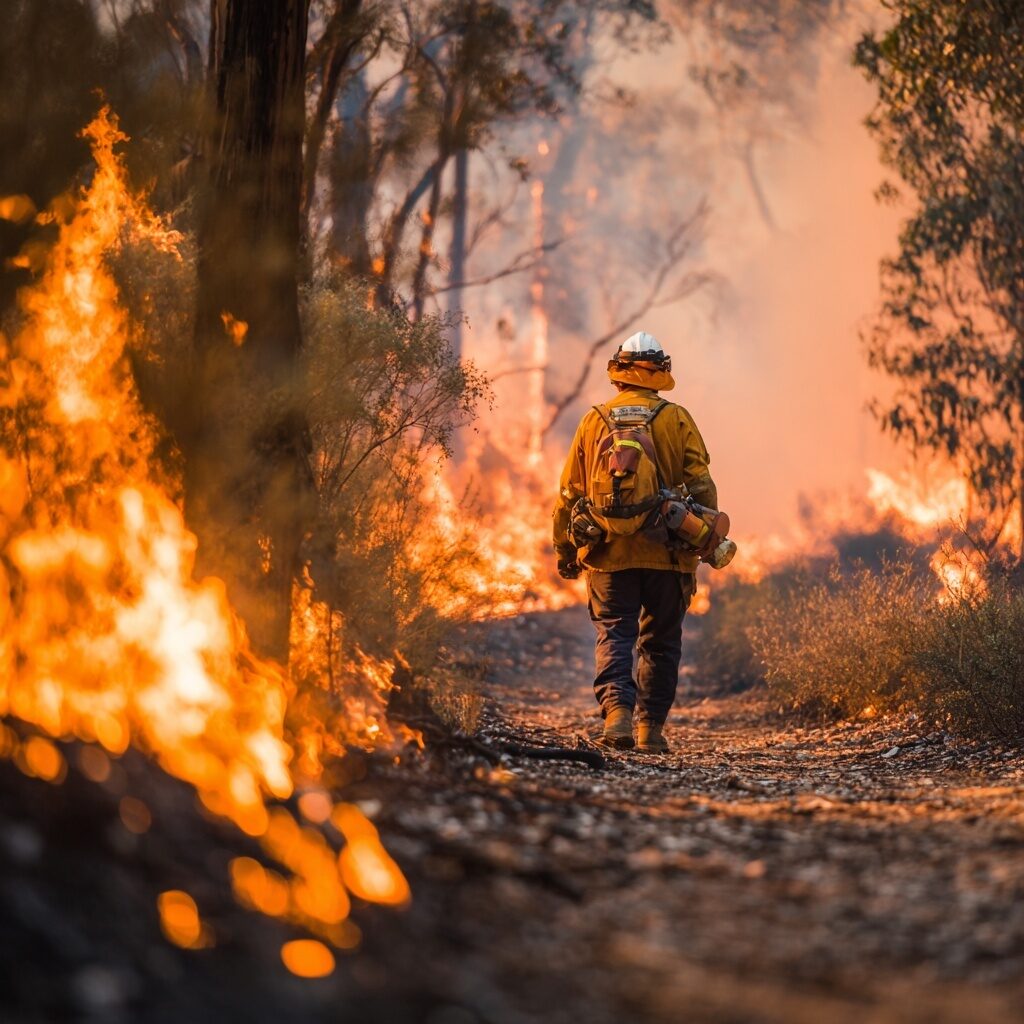Wildfires and climate change. Climate change has transformed the behavior of wildfires across the planet. Rising temperatures, prolonged droughts, and decreasing soil moisture create the perfect scenario for fires that are larger, more intense, and harder to control. This direct link between climate and wildfires represents a growing threat to ecosystems, rural communities, and firefighting teams.
Climate change increases the frequency and intensity of wildfires
According to recent scientific data, global warming is causing longer and more violent fire seasons. Extreme heat waves and reduced rainfall contribute to vegetation —dry grass, shrubs, and forests— igniting more easily. This not only increases the burned area but also accelerates the fire’s spread and erratic behavior.
In Mediterranean regions, where temperatures often exceed 40 °C in summer, wildfires are behaving with unprecedented violence. Fires generated under dry and windy conditions create convective columns capable of altering their own microclimate, making firefighting operations even more complex.
Ecological and social consequences of wildfires
Beyond the immediate loss of forest mass, fires cause soil degradation, reduce biodiversity, and accelerate desertification. The CO₂ emissions released during fires feed back into climate change, creating a vicious cycle: more fires produce more greenhouse gases, and these in turn intensify global warming.
The social consequences are equally severe: displacement of rural communities, economic losses, and greater risks for emergency teams. Wildland firefighters face increasingly extreme conditions, where radiant and convective heat can exceed the physiological limits of human survival.
Self-protection as a response to the new climate reality
In this context, prevention and self-protection become essential pillars. Companies such as ISK Fire Survival develop advanced technologies to increase survival in extreme fire environments. Its Integral Safety Kit includes solutions such as the FS1 Integral Nozzle, which creates a water barrier against radiant heat; the FS2 Collective Shelter, capable of withstanding temperatures above 1200 °C; and FS4 and FS5 Fire-Resistant Curtains and Skirts, which protect vehicles and heavy machinery during entrapment situations.
These systems, certified under European standards UNE EN ISO 11612 and EN 469/A1, are vital tools to reduce the risk of fatalities and protect professionals battling wildfires.
Adaptation, technology, and resilience
The future of wildfire management depends on adaptation. Self-protection strategies, the use of high-resistance fireproof materials, and specialized training are essential to mitigate the effects of climate change on fire activity.
In this new reality, ISK Fire Survival promotes a culture of comprehensive safety, where technological innovation and tactical preparation ensure that —even when everything fails— there is still a chance to survive.
